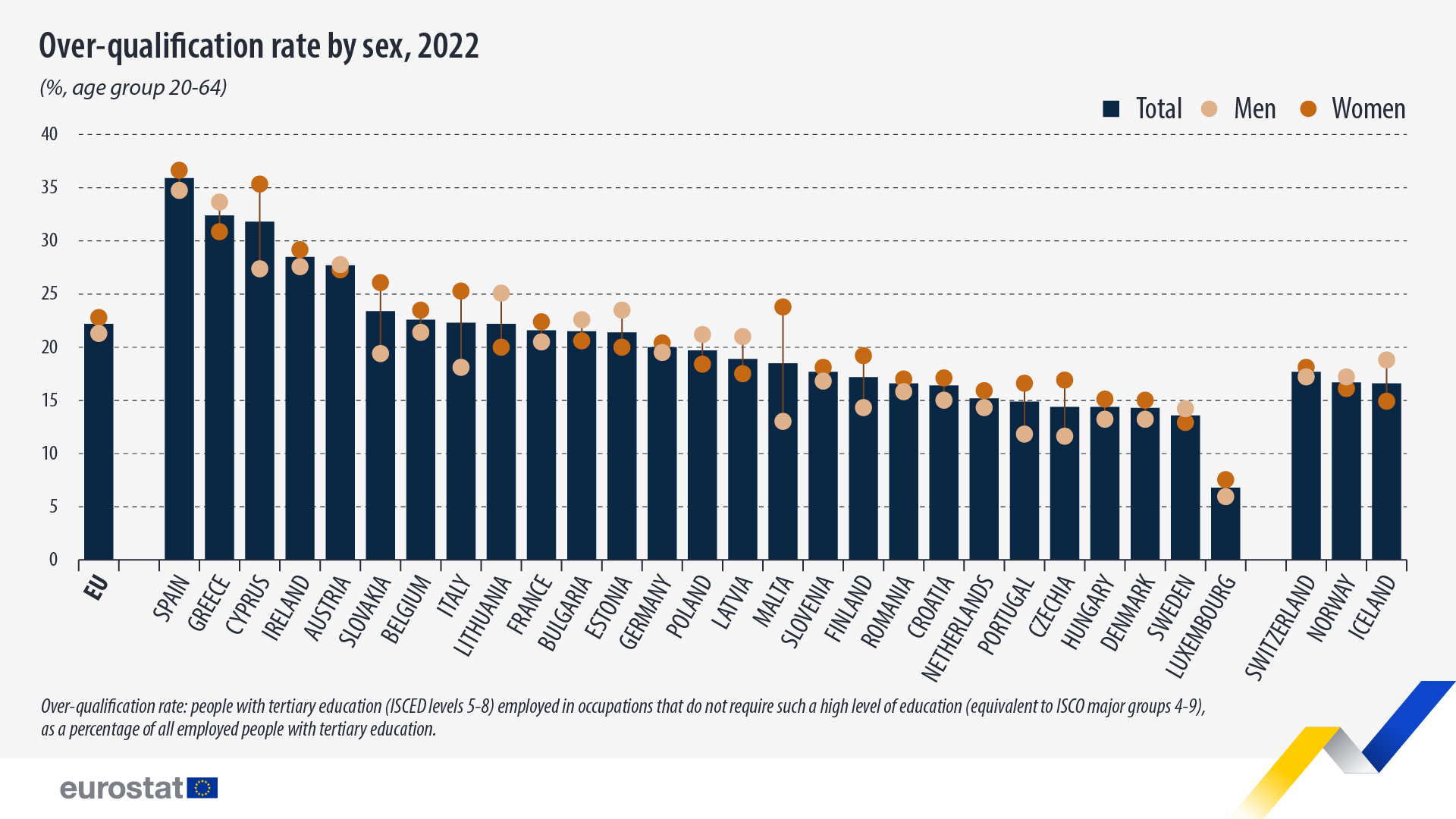May 2, 2023
In 2022, 75% (193.5 million) of the EU’s 20-64-year-olds were employed, the highest share recorded since the start of the time series in 2009. The employment rate dropped to 72% in 2020 due to the COVID-19 pandemic, but rebounded to 73% in 2021 and further increased by 2 percentage points (pp) in 2022.
This information comes from the data on the labour force published recently by Eurostat. This article presents a handful of findings from the more detailed Statistics Explained article.
Among the EU countries, 11 had employment rates above 78% (one of the three targets set in the 2030 action plan of the European Pillar of Social Rights), with the Netherlands (83%), Sweden, and Estonia (both 82%) having the highest rates. The lowest rates were recorded in Italy (65%), Greece (66%), and Romania (69%).
Women more over-qualified than men
In 2022, the EU over-qualification rate was 22%, with 21% for men and 23% for women. Over-qualification is when people with tertiary education (ISCED levels 5-8) are employed in occupations that do not require such a high level of education (equivalent to ISCO major groups 4-9). Since 2023 is the European Year of Skills, these statistics might help to inform policymakers how people in the EU fare in terms of application of their qualifications.
Among the EU countries, the over-qualification rate was highest in Spain (36%), followed by Greece and Cyprus (each 32%). Meanwhile, Luxembourg (7%), Sweden, Denmark, Hungary, and Czechia (each 14%) recorded the lowest rates.
In 19 of the 27 EU countries, women had higher over-qualification rates than men, with the largest differences recorded in Malta (+11 pp), Cyprus (+8 pp), Italy, and Slovakia (both +7 pp). However, in eight EU countries, men had higher over-qualification rates, with the biggest differences recorded in Baltic countries: Lithuania (+5 pp), Estonia, and Latvia (each +4 pp).
Source: Eurostat
Legal Notice: The information in this article is intended for information purposes only. It is not intended for professional information purposes specific to a person or an institution. Every institution has different requirements because of its own circumstances even though they bear a resemblance to each other. Consequently, it is your interest to consult on an expert before taking a decision based on information stated in this article and putting into practice. Neither Karen Audit nor related person or institutions are not responsible for any damages or losses that might occur in consequence of the use of the information in this article by private or formal, real or legal person and institutions.







